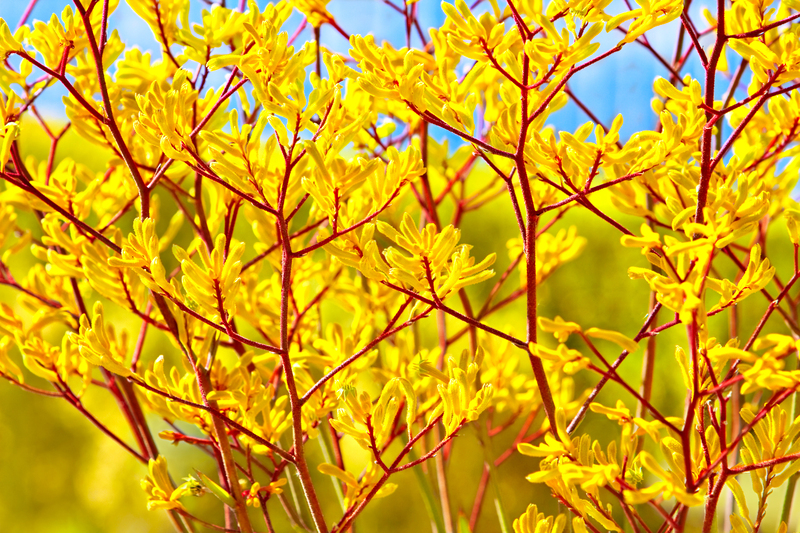Custom Hedge Shapes: Techniques to Elevate Your Landscape
Posted on 08/09/2025
Custom Hedge Shapes: Techniques to Elevate Your Landscape
In the world of landscape design, hedges play an indispensable role, offering everything from privacy to eye-catching boundaries. But the days of the plain rectangular hedge are long gone! Modern gardens call for custom hedge shapes that bring unique visual interest, personal flair, and artistic credibility to your outdoor spaces.
Whether you're inspired by ornate European parterres, whimsical animal topiaries, or sleek, minimalist frames, custom hedge pruning can dramatically transform the aesthetic of your property. This in-depth guide will walk you through powerful techniques for sculpting hedges, practical tips for maintaining them, and creative ideas to spark your imagination. Read on to discover how to elevate your landscape with custom hedge shapes!

Why Choose Custom Hedge Shapes for Your Landscape?
The benefits of sculpted hedges extend far beyond mere visual appeal. By incorporating unique hedge designs into your garden, you can:
- Add Structure and Definition: Shape hedges into crisp lines, bold geometric patterns, or sweeping curves to frame spaces, anchor garden features, and create defined zones.
- Express Personality: Custom hedge designs are an opportunity to reflect your style, whether it's formal, playful, or architectural.
- Increase Curb Appeal: Eye-catching hedge shapes make your property stand out, potentially increasing its value and appeal to guests or potential buyers.
- Encourage Biodiversity: Thoughtfully shaped and maintained hedges provide shelter and food for birds and beneficial insects.
Opting for custom-shaped hedges is one of the most effective ways to make a landscape truly yours.
Popular Custom Hedge Shape Ideas
1. Geometric Patterns
From squares and rectangles to spheres, pyramids, and spirals, geometric hedge shapes are the hallmark of formal gardens. Geometric hedging is ideal for contemporary or traditional settings looking to showcase order and symmetry.
2. Animal and Object Topiary
Embrace artistry with topiary hedges shaped like animals, birds, or everyday objects. This playful approach is excellent for family-friendly spaces, themed gardens, or creating photogenic focal points. Animal shapes such as peacocks, rabbits, and elephants are popular, and the creative possibilities are endless!
3. Organic & Naturalistic Forms
If you prefer a softer look, custom hedge pruning can follow undulating, wavy lines or imitate the form of waves, clouds, or mounds. These naturalistic hedge shapes suit cottage-style and wildlife gardens especially well.
4. Letters and Numbers
Personalize your landscape by shaping hedges into your initials, house number, or a meaningful word. Businesses and institutions often use letter-shaped hedges for branding or signage that blends seamlessly with the landscape.
5. Tiered & Layered Hedges
Craft dynamic visual interest with hedges trimmed to varying heights or stepped levels. This approach adds depth and rhythm to large or sloped gardens.
Best Hedge Plants for Custom Shapes
Not every plant can be transformed into elaborate or tight forms. Picking the right species is essential for success with custom hedge shaping. Consider the following:
- Boxwood (Buxus sempervirens): Dense, slow-growing, and responsive to frequent trimming, boxwood remains the top choice for detailed, low, or geometric hedges.
- Yew (Taxus baccata): Yew hedges are highly trainable and perfect for topiary or intricate shapes. Plus, their dark green foliage stays attractive year-round.
- Privet (Ligustrum spp.): Fast-growing and tolerant, privet lends itself well to a range of custom designs for those seeking speedy results.
- Holly (Ilex spp.): The glossy leaves and dense growth of holly allow for creative forms and make excellent evergreen boundaries.
- Japanese Holly (Ilex crenata): Resembling boxwood but more resistant to some pests, this species features tiny, scalloped leaves ideal for detail work.
- Beech (Fagus sylvatica) and Hornbeam (Carpinus betulus): Deciduous options with lush summer foliage and attractive winter structure after the leaves fall.
Remember to choose hedge plants that match your climate, soil conditions, and desired maintenance level.
Key Techniques for Shaping Custom Hedges
Creating perfectly sculpted hedges requires more than just enthusiasm. It's a blend of art, horticulture, and precise technique. Here are the primary pruning methods for custom hedge shapes:
1. Planning and Marking Out the Shape
- Start by sketching your vision or finding inspiration from garden design books and websites.
- Use stakes, strings, bamboo canes, or templates to delineate the desired outline on the ground and through the plants.
- For complex shapes, consider crafting cardboard or wire mesh guides as a framework.
2. Choosing the Right Tools
- Hand shears and secateurs: For fine detailing and precision shaping, especially with intricate patterns or topiary elements.
- Powered hedge trimmers: Excellent for larger geometric forms and giving a smooth finish to long stretches.
- Sharp loppers and pruning saws: For removing thicker branches or restructuring old hedges.
*Keep your tools sharp and clean to avoid damaging your plants!*
3. Pruning Techniques: Tips and Tricks
- Work from the Bottom Up: Begin trimming at the base of the hedge and move upward, ensuring a consistent and even shape throughout.
- Maintain a Slight Taper: The base should be wider than the top to allow light to reach all parts of the plant and prevent dieback at the base.
- Frequent Light Trims: Don't let the hedge get too unruly--regular, light trimmings encourage denser coverage for crisp edges and smooth surfaces.
- Check from Different Angles: Step back often to observe the shape from all viewpoints, ensuring symmetry and balance.
- Patience Is Key: Some forms, especially highly sculpted topiary, can take several seasons to perfect the desired contour and fullness.
4. Training Young Hedges
Start shaping while your hedge is young and flexible for the best long-term results. Early formative pruning encourages thick, healthy growth and helps your plants "remember" the target shape as they mature.
5. Creating Topiary and Advanced Shapes
- Wire Frames: For animals and intricate forms, use wire topiary frames as guides. Trim as the plant grows to fill the frame, gradually shaping it to your desired outcome.
- Layered Trimming: For multi-tiered or tiered hedges, prune in stages, focusing on one level at a time to build depth and structure.
- Patience and Practice: Intricate designs may take years to reach their final form but are well worth the persistent effort.
Maintenance Tips for Custom Hedge Shapes
To keep your custom hedge designs in peak condition, ongoing care and attention are needed. Here are some essential maintenance strategies:
- Regular Pruning: Shape up at least twice per season, more if you're maintaining fine patterns or detailed topiary.
- Fertilization: Feed with balanced, slow-release fertilizers in early spring to support vigorous new growth.
- Mulching: Retain soil moisture and suppress weeds by mulching the base of your hedges each year.
- Pest & Disease Monitoring: Check for signs of leaf spot, blight, aphids, or scale insects. The healthier your hedge, the easier it is to maintain intricate shapes.
- Watering: Especially for newly planted hedges or during dry spells, consistent moisture keeps your plants lush and green.
Pro Tip: The best time to trim most evergreen hedges is late spring to midsummer, once the new flush of growth has emerged. For deciduous varieties, late winter or early spring before bud break is ideal.
Creative Custom Hedge Shape Inspiration
Still searching for a signature hedge style? Explore these imaginative ideas to spark your creativity:
- Knot Gardens: Interwoven low hedges create Celtic-inspired patterns and formal elegance--perfect for small courtyards!
- Hedge Mazes: Large properties can challenge and delight with classic maze layouts or modern labyrinths.
- Seasonal Scenes: Topiary sculpted for holidays and events, such as Easter rabbits or Christmas trees.
- Architectural Hedges: Mimic the forms of columns, arches, or balustrades to echo your home's architectural style.
- Water-Themed Waves: Use undulating lines and varying heights to evoke the movement of water--soothing and elegant!
Browse landscape design portfolios, visit botanical gardens, or experiment with miniature models before tackling full-scale custom hedge artistry in your own space.
Common Challenges & Solutions in Custom Hedge Sculpting
- Hedge Browning or Dieback: Usually due to insufficient light reaching the base. Maintain the classic "A" shape: wider at the bottom than the top.
- Gaps and Thin Growth: Regular trimming and occasional hard pruning encourage dense new shoots. Severe gaps may require replanting or infill.
- Difficulty Achieving Clean Lines: Apply string lines, taut wires, or cardboard/metal templates as a visual guide while you trim.
- Pest and Disease Issues: Choose disease-resistant varieties, promote airflow, and always sanitize cutting tools between hedges to avoid cross-contamination.

FAQs: Everything You Need to Know About Custom Hedge Shapes
Which hedge plants are easiest to shape?
Boxwood and yew are the easiest for beginners due to their slow, dense growth. Privet and holly are also highly responsive to frequent trims.
How often should I trim custom-shaped hedges?
For highly sculpted or intricate designs, trim every 4-6 weeks during the growing season. For larger, less detailed forms, twice a year is sufficient.
Can I rejuvenate an old, overgrown hedge into a custom shape?
Yes! Major renovation pruning in late winter--removing up to one-third of the oldest wood--can restore vigor. However, patience is required as the new shape fills in. Some species recover better from hard pruning than others.
Do I need a professional landscaper for complex hedge shapes?
While DIY shaping works well for smaller or simpler forms, large-scale topiary, tight spirals, or intricate animals often benefit from an experienced hand. Consider consulting a professional for challenging projects.
Conclusion: Transform Your Landscape with Custom Hedge Shapes
Custom hedge shapes are so much more than boundaries or privacy screens--they're a living canvas for creativity, artistry, and unique self-expression. With the right techniques, tools, and plant choices, custom-shaped hedges can truly elevate your landscape, drawing admiration and adding value to any backyard or estate. Whether you aspire to grand formal designs or quirky, playful topiary, the only limit is your imagination.
Start planning your signature hedge today, and see how landscape personalization can bring your outdoor visions to life!

